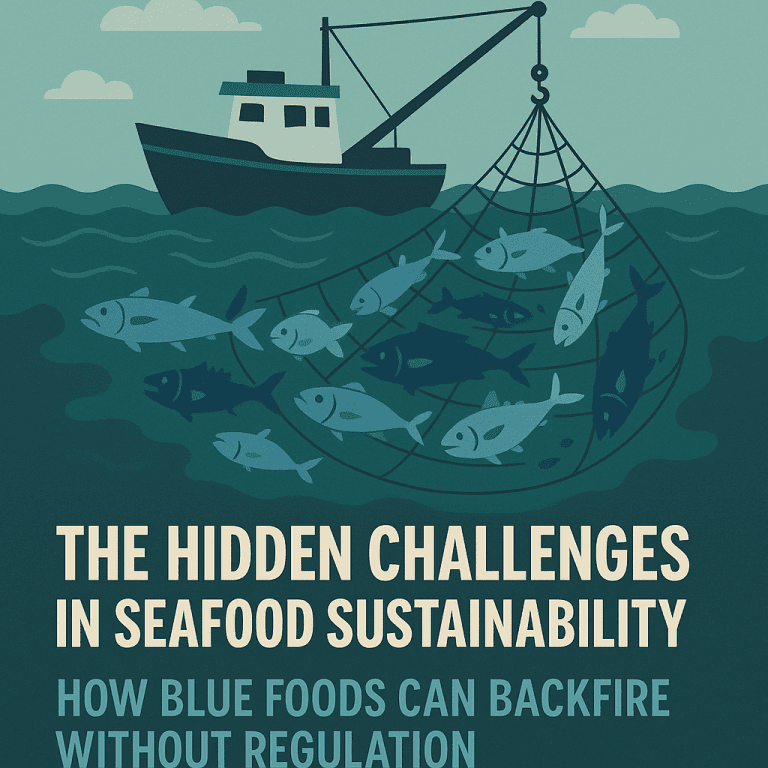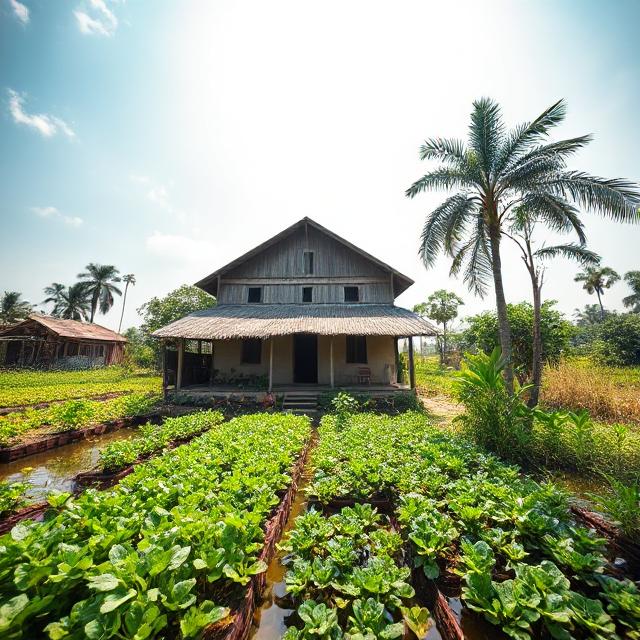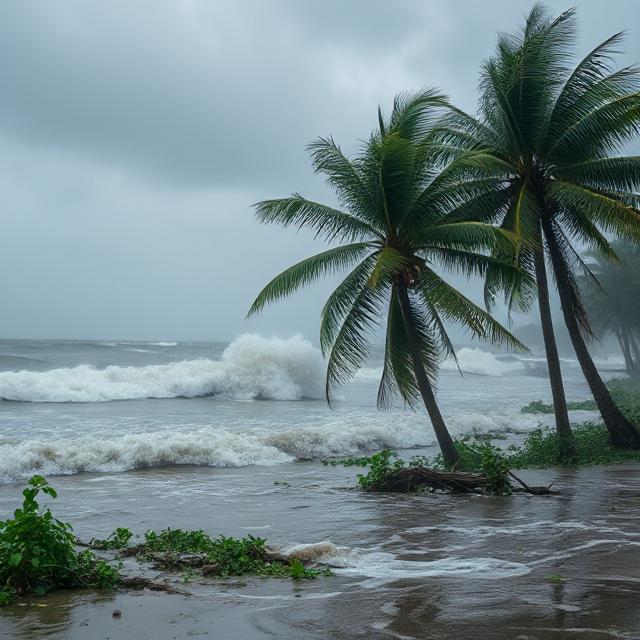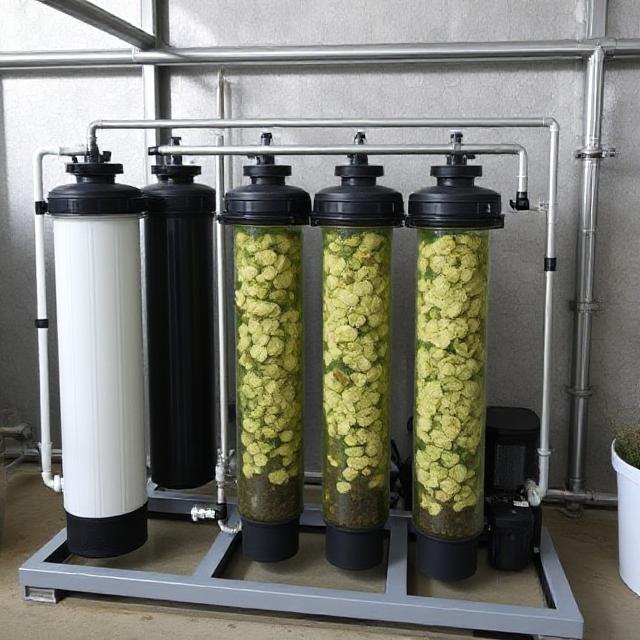Marine Protected Area (MPA): Conservation, Benefits & Importance
Expanding Bangladesh’s Marine Protected Area (MPA) network including the Swatch of No Ground ensures sustainable fisheries, biodiversity protection, climate resilience, and improved community livelihoods. Stronger MPAs reduce overfishing, protect endangered species, and provide alternative incomes for coastal households.
In 2023, the FAO reported that 35% of global fish stocks are overexploited [FAO]. For Bangladesh, where millions depend on the Bay of Bengal, this is alarming. On forums like Reddit’s r/environment, users often debate whether MPAs actually work. One user wrote, “MPAs are not just about fish, they are about future survival” [Reddit].
Bangladesh’s coastline is home to 3.2 million small-scale fishers and countless communities that rely on fishing, seaweed, and aquaculture. Yet, climate change, overfishing, and pollution threaten these livelihoods daily. Many coastal households in Cox’s Bazar, Satkhira, Khulna, and the Sundarbans already face declining catches, saltwater intrusion, and economic uncertainty.
The question is: How do we secure food, protect biodiversity, and sustain livelihoods?
One powerful solution is expanding and strengthening the country’s Marine Protected Area (MPA) network, including the Swatch of No Ground MPA and other coastal zones.
This blog explores why MPAs matter, how they can protect biodiversity, support sustainable fisheries, empower communities, and build climate resilience.
What is a Marine Protected Area (MPA)?
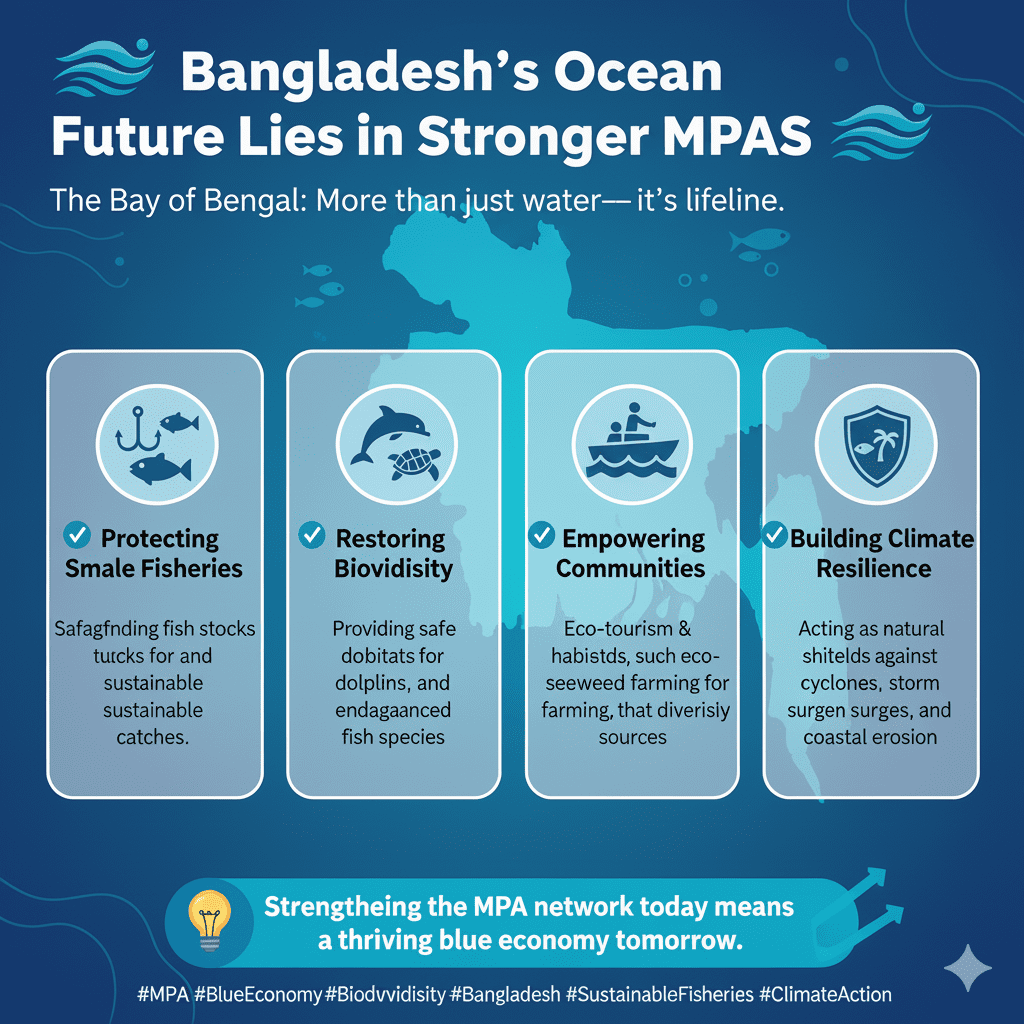
A Marine Protected Area (MPA) is a clearly defined ocean or coastal zone managed for conservation, biodiversity protection, and sustainable resource use.
Marine Protected Areas are designated ocean or coastal zones where human activities are regulated to protect ecosystems and resources. They can vary from no-take zones, where all fishing is banned, to multiple-use areas that allow regulated activities like eco-tourism or sustainable fishing.
Bangladesh currently has a small but growing network of MPAs, the most significant being the Swatch of No Ground, a deep-sea canyon and biodiversity hotspot. Expanding these zones is essential for:
- Protecting endangered marine life like dolphins, sharks, and turtles
- Preserving coral reefs, mangroves, and seagrass beds
- Supporting small-scale fishers through sustainable practices
- Building resilience to climate change impacts such as cyclones and coastal erosion
Where We Stand: Global & National Key Ocean & Fisheries Statistics at a Glance
Overfishing, habitat loss, and weak protection remain pressing challenges. Data from FAO and the United Nations reveal both progress and urgent gaps:
Global Fish Stock Status (FAO, 2022)
- 64.5% of assessed stocks are fished at biologically sustainable levels.
- 35.5% remain overfished a major risk for food security and ecosystems.
(Pie chart: Sustainable vs Overfished Stocks Source: FAO, 2022)
Marine Protected Area Coverage (UN, 2023)
- Only 8.4% of the global ocean is designated as MPAs.
- Far below the 30% by 2030 (30×30) global ambition.
(Bar chart: Current 8.4% vs Target 30% Source: UNEP-WCMC, Protected Planet)
🇧🇩 Bangladesh Example – Swatch of No Ground MPA
- Covers 1,738 km² (Bangladesh’s first deep-sea MPA).
- Bangladesh’s EEZ ≈ 118,000 km².
- Swatch = ~1.47% of EEZ an important start, but far from the 30% goal.
(Bar chart: Swatch share of BD EEZ vs 30×30 target Source: MPA Atlas)
Local Pressures in Bangladesh (Mongabay, 2023)
- Declining fish catches and species diversity reported.
- Industrial trawlers + illegal gear continue to strain stocks.
- Communities are experiencing reduced incomes and food security.
(Source: Mongabay, 2023)
Summary Data Table
| Indicator | Value | Source |
| Global sustainable fish stocks | 64.5% | FAO |
| Global overfished stocks | 35.5% | FAO |
| Global ocean MPA coverage | 8.4% | UNEP-WCMC |
| Swatch of No Ground area | 1,738 km² | MPA Atlas |
| Bangladesh EEZ (approx) | 118,000 km² | MPA Atlas |
| Swatch % of BD EEZ | ~1.47% | MPA Atlas |
| Global 30×30 target | 30% | United Nations |
Interpretation for Action
- FAO data show recovery is happening but uneven. Stronger management is needed.
- The global MPA gap (8.4% vs 30%) highlights where investment and policy must focus.
- Bangladesh’s Swatch MPA is critical, but expansion and networking are essential for ecological connectivity.
- Local declines already documented stronger MPAs + enforcement + livelihood support can reverse the trend.
Why Does Bangladesh Need to Expand its MPA Network?
Bangladesh needs stronger MPAs to conserve biodiversity, ensure sustainable small-scale fisheries, enhance enforcement, and support community livelihoods.
The Bay of Bengal is under severe stress. Overfishing, trawler competition, and destructive practices like illegal gear use threaten marine ecosystems. According to WorldFish, Bangladesh’s coastal fisheries are critical for food security but face sharp declines without immediate conservation.
Expanding the MPA network offers multiple benefits:
- Sustainable Fisheries – Protecting spawning grounds ensures fish populations recover and remain stable.
- Biodiversity Conservation – Safeguards iconic species like the Irrawaddy dolphin and Olive Ridley turtle.
- Community Livelihoods – MPAs create alternative jobs, such as eco-tourism, seaweed farming, and green mussel cultivation.
- Climate Adaptation – Healthy mangroves and coral reefs act as buffers against cyclones and sea-level rise.
- Global Commitments – Supports Bangladesh’s pledge to the UN’s 30×30 target to conserve 30% of oceans by 2030.
Read more: EcoNature BD’s insights on sustainable fisheries
Expanding Bangladesh’s Marine Protected Area (MPA) network like the Swatch of No Ground protects biodiversity, sustains fisheries, supports coastal communities, and strengthens climate resilience.
What Challenges Threaten Bangladesh’s MPA Network?
Bangladesh’s MPAs face challenges like weak enforcement, overfishing, lack of funding, community resistance, and climate stress. While MPAs hold promise, Bangladesh faces significant obstacles to effective management.
1. Weak Enforcement and Monitoring
- Limited patrol boats and trained officers make it difficult to enforce no-take rules.
- Illegal fishing by industrial trawlers often goes unchecked.
- Community fishers see unfairness when rules only affect them, not large operators.
2. Overfishing and Illegal Practices
- Small-scale fishers rely heavily on daily catches.
- Destructive gear like fine-mesh nets and illegal trawlers still dominate.
- The Bay of Bengal Initiative Report (WMO, 2022) showed a 20% decline in fish biomass in the last decade.
3. Community Resistance and Livelihood Gaps
- Many fishers fear MPAs will cut income without offering alternatives.
- In Satkhira and Khulna, fishers shared that they “struggle to feed families when no-fishing rules apply”.
- Without economic incentives, compliance drops.
4. Climate Change Pressures
- Rising sea levels and cyclones damage mangroves and coastal ecosystems.
- Saltwater intrusion reduces fish nursery grounds and farming options.
- The IPCC 2023 report warns Bangladesh will lose 17% of land by 2050 due to sea-level rise.
5. Insufficient Funding and Coordination
- MPAs need research, monitoring tools, and trained staff.
- Government, NGOs, and development agencies often work in silos.
- Duplication of effort weakens long-term impact.
Recommendations for Expanding and Strengthening MPAs in Bangladesh
Bangladesh can strengthen MPAs through stronger enforcement, community engagement, diversified livelihoods, science-based planning, and international partnerships.
To make MPAs effective, Bangladesh must balance conservation with livelihoods. Solutions should come from co-management and evidence-based planning.
1. Strengthen Enforcement and Surveillance
- Use satellite tracking, drones, and community patrols.
- Empower coast guard and local authorities with better tools.
- Create transparent reporting systems for illegal fishing.
2. Community-Led Co-Management
- Include fishers, women’s groups, and youth in MPA committees.
- Build trust through participatory decision-making.
- Offer training in conservation and eco-friendly practices.
3. Alternative Livelihood Programs
- Promote seaweed, green mussel, and oyster farming.
- Support eco-tourism in Cox’s Bazar and Sundarbans.
- Provide microfinance for women-led coastal enterprises.
4. Science-Based MPA Design
- Expand MPAs to include key habitats like coral reefs, mangroves, and seagrass beds.
- Use research from WorldFish, IUCN, and universities for evidence-based zoning.
- Integrate biodiversity monitoring into national climate adaptation plans.
5. International Partnerships and Funding
- Tap into Blue Economy investments.
- Collaborate with FAO, UNDP, World Bank, and regional initiatives.
- Leverage 30×30 global conservation goal for donor support.
Organizational Responsibility: Who Should Lead the Way?
The government, NGOs, research institutions, and coastal communities all share responsibility for strengthening Bangladesh’s MPAs. Strengthening MPAs requires multi-stakeholder responsibility.
Government of Bangladesh
- Ministry of Fisheries and Livestock (MoFL) should lead policy and regulation.
- Department of Environment should integrate MPAs into climate adaptation.
- Local government bodies should facilitate community participation.
NGOs and Civil Society
- NGOs like WorldFish, Shushilan, and BRAC already pilot conservation models.
- They can scale training, awareness, and co-management frameworks.
- Advocacy networks can amplify fisher voices in policy spaces.
Academic and Research Institutions
- Universities like CVASU, Dhaka University, Khulna University should provide data, mapping, and monitoring.
- Student researchers can conduct biodiversity assessments and community studies.
International Development Partners
- UNDP, FAO, and IUCN can provide technical expertise and financial support.
- Donor agencies can fund livelihood diversification and monitoring systems.
Coastal Communities
- Fishers, women, and youth are the real guardians of MPAs.
- Their participation is key for compliance and long-term sustainability.
As one Redditor on r/sustainability noted: “Without communities, MPAs are just lines on a map” [Reddit].
Local Case Study: Voices from the Coast
In Satkhira, small-scale fishers reported declining hilsa catches during interviews conducted by WorldFish. Many expressed fears that “our children may never see the abundance we saw 20 years ago.”
In Khulna, women-led seaweed farming groups, supported by NGOs, are proving that MPAs can bring new hope. A pilot project showed 20% higher income from seaweed cultivation compared to seasonal fishing.
In Cox’s Bazar, dolphin and turtle sightings increased after local patrols were introduced. Communities now run eco-tourism boat tours, providing both income and conservation awareness.
These stories show that MPAs succeed when people are part of the solution.
Expanding Bangladesh’s MPA Network
Bangladesh’s future depends on oceans that thrive with life and communities that prosper. Expanding the MPA network is not just about protecting fish; it’s about building a resilient Blue Economy.
At EcoNature BD, we work with NGOs, policymakers, and entrepreneurs to design scalable aquaculture solutions, provide consultancy for MPA co-management, and support climate-smart livelihoods.
Contact EcoNature BD today to explore partnerships and sustainable solutions for coastal resilience.
FAQs
1. Why are Marine Protected Areas important for Bangladesh?
MPAs safeguard fish stocks, protect biodiversity, and help coastal communities adapt to climate change. They ensure sustainable fisheries and protect endangered marine species.
2. What is the Swatch of No Ground MPA?
It is Bangladesh’s first deep-sea MPA, covering 1,738 sq. km, home to dolphins, sharks, and turtles.
3. How do MPAs support small-scale fishers?
MPAs rebuild fish stocks, ensure long-term catches, and provide alternative livelihoods like eco-tourism and seaweed farming.
4. What are the main challenges for MPAs in Bangladesh?
Weak enforcement, lack of funding, community resistance, climate change, and illegal fishing are major challenges.
5. How can NGOs support MPA management?
NGOs provide training, awareness campaigns, co-management models, and alternative livelihood programs for fishers.
6. What role do communities play in MPAs?
Communities are the guardians of MPAs. Their compliance, knowledge, and participation ensure long-term success.
7. How can MPAs help fight climate change?
By protecting mangroves, coral reefs, and seagrass beds, MPAs buffer storms, store carbon, and build resilience.

